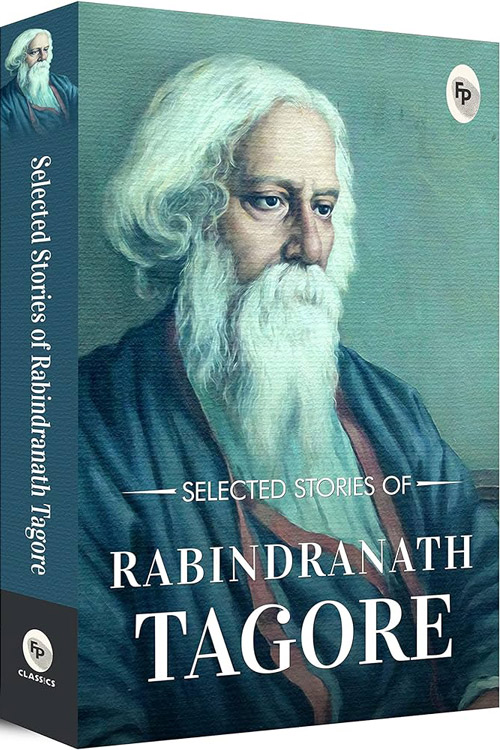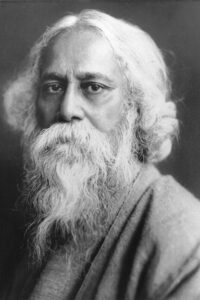
Stories from Tagore
The window of my room overlooks the road. The child had seated herself at my feet near my table and was playing softly, drumming on her knees. I was hard at work on my seventeenth chapter, where Pratap Singh, the hero, had just caught Kanchanlata, the heroine, in his arms and was about to escape with her by the third-story window of the castle when all of a sudden, Mini left her play and ran to the window, crying: “A Cabuliwallah! a Cabuliwallah!” Sure enough, in the street below was a Cabuliwallah, passing slowly along.
He wore his people’s loose, soiled clothing with a tall turban; a bag was on his back, and he carried boxes of grapes. I cannot tell what my daughter’s feelings were at the sight of this man, but she began to call him loudly. “Ah!” I thought, “he will come in, and my seventeenth chapter will never be finished!” At this exact moment, the Cabuliwallah turned and looked up at the child. When she saw this, overcome by terror, she fled to her mother’s protection and disappeared.
Read or download Book
Rabindranath Tagore
Rabindranath Tagore FRAS (7 May 1861 – 8 August 1941) was an Indian poet, writer, playwright, composer, philosopher, social reformer and painter.
Biography.
Between 1878 and 1932, Tagore set foot in over thirty countries on five continents. In 1912, he took a bundle of his translated works to England, where they gained attention from missionary and Gandhi protégé Charles F. Andrews, Irish poet William Butler Yeats, Ezra Pound, Robert Bridges, Ernest Rhys, Thomas Sturge Moore, and others. Yeats wrote the preface to the English translation of Gitanjali; Andrews joined Tagore at Santiniketan. In November 1912, Tagore began touring the United States and the United Kingdom, staying in Butterton, Staffordshire, with Andrews’s clergymen friends. From May 1916 until April 1917, he lectured in Japan and the United States. He denounced nationalism. His essay “Nationalism in India” was scorned and praised; Romain Rolland and other pacifists admired it. Shortly after returning home, the 63-year-old Tagore accepted an invitation from the Peruvian government.
He travelled to Mexico. Each government pledged US$100,000 to his school to commemorate the visits. A week after his 6 November 1924 arrival in Buenos Aires, an ill Tagore shifted to the Villa Miralrío at the behest of Victoria Ocampo. He left for home in January 1925. In May 1926, Tagore reached Naples; the next day, he met Mussolini in Rome. Their warm rapport ended when Tagore pronounced upon Il Duce’s fascist finesse. He had earlier enthused: “[w]without any doubt he is a great personality. That head has such a massive vigour that it reminds one of Michael Angelo’s chisel.” A “fire-bath” of fascism was to have educed “the immortal soul of Italy … clothed in quenchless light”.






